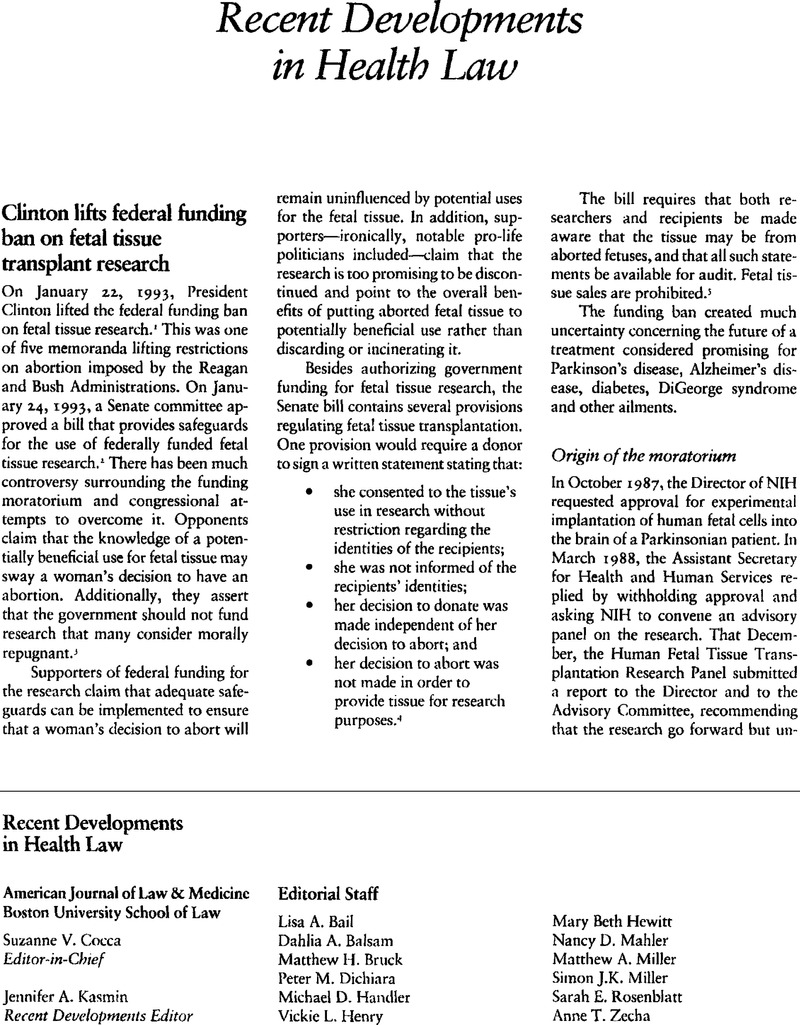In
Lifchez v. Hartigan, 735 F.Supp. 1361 (N.D. Ill.
1990) the court held a statute unconstitutionally vague due to the words “therapeutic” and “experimentation.” But, in
Jane L. v. Bangerter,
1992 U.S. Dist. Lexis 7529 (C.D. Utah
1992) the court upheld a statute despite the charge of being unconstitutionally vague for using the word “experimentation.”
Google Scholar